|
April on Art
In South Florida and Beyond |
 Dear Art Lover--- It's September -- one of the most exciting cultural seasons here in South Florida; a plethora of great art coming to our region to examine and enjoy. I'm updating the calendar to make sure it includes all significant September art showings, gallery highlights and events! More to come... April-- September 3, 2016 Landscape Art of A.E Backus and Florida's Highwaymen--Florida Atlantic University September 16 -- November 19 Ritter Gallery Sept. 15 - Nov. 19, 2016 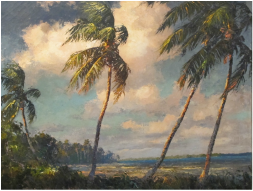 A.E.Backus, Landscape (Not in FAU exhibition) A.E.Backus, Landscape (Not in FAU exhibition) This exhibit brings together -- for the first time in such detail -- the art of A.E. Backus and that of the Florida Highwaymen, the African American artists from Ft. Pierce inspired by Backus, Florida's greatest landscape artist. The exhibit includes a series of lectures and examinations of how these "Florida Highwaymen" flourished in the Jim Crow south of the 1960s. Botanicals--Antique Engravings & Lithographs-- Ann Norton Sculpture Garden 2051 S. Flagler Dr., West Palm Beach Sept. 15 - Oct. 20, 2016 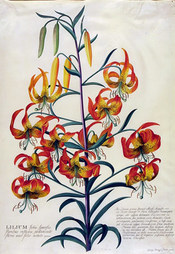 American Turk Cap Lily, Georg Dionysius Ehret, Wikepedia (Not from Norton Garden Exhibitiion) American Turk Cap Lily, Georg Dionysius Ehret, Wikepedia (Not from Norton Garden Exhibitiion) Lovers of flower prints will be delighted with this exhibit. It contains a beautiful selection of rare lithographs and engravings that depict botanicals, fruit, architectural renderings, and Coats of Arms dating from the 1500s through the 1800s. All are for sale. Each one is beautifully displayed in beautiful handmade frames in mahogany, burl wood, gold and silver leaf, tortoise shell, and marquetry by Giovanni Bello of Florence, Italy. Many include hand-painted mats. All-Florida Invitational at the Boca Raton Museum Through December 15, 2016 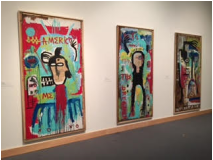 Emilio Martinez, American Me, 2015, mixed media on wood panel Emilio Martinez, American Me, 2015, mixed media on wood panel The relaunched All-Florida Invitational at the Boca Museum contains a wide range of types of art. Begun in 1951, the format is new. Five established artists were asked to select five emerging artists. You'll see artwork from 31 artists--some familiar--others entirely new--artwork in a wide variety of genres from video to found objects. There are some outstanding pieces, although many of the best are by the established artist/curators themselves.
1 Comment
The tower cast a spell over me immediately and beckoned me to come closer and examine it. Coming closer, I could see ribbons of miniature people in action poses that swirl around the cylinder from top to bottom. These are based on photographs taken by Cervetti. 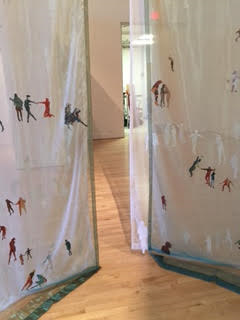 When I stepped inside and looked up toward the ceiling, I felt an almost mystical sense of tranquility and peace and community. That seems to be just what the artist had in mind. She wanted to create “a non-violent place where myriad members of a single humanity share experiences with one another in the context of a protected sacred space for all to share.” Those are beautiful words to describe a beautiful piece of art—and impressive dream—of a very creative, talented, and thoughtful young artist. 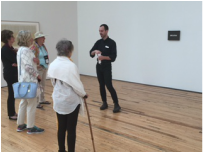 This past June, I traveled to the Dia Art Foundation in Beacon, NY, to answer the question, “What is conceptual art?” I had heard that the Dia art center there had an amazing selection of conceptual, minimalist and post-minimalist art—much of it acquired in the 1960s when conceptual art burst on the art scene. So, since I was in in nearby Poughkeepsie for a Vassar College reunion, I took a bus tour with classmates to explore the center. Conceptual Art - "Art in which the idea presented is more important than the finished product, if there is one.”  Definitions like this have left me confused. They are pretty abstract and intellectual. They immediately make me wonder, "What if the viewer looks at the piece of art, but no idea emerges?" "Does the viewer have to be a mind reader?" And most important of all: " "Does conceptual art from the 1960s--and beyond--have true "staying power?" With those questions in mind, I followed our guide into a large room that held 36 of the canvases of On Kawara’s famous Date Points series. Each black rectangle is inscribed with the day, month, and year Kawara painted it. It seemed obsessive to me. But as we walked around the room, my classmates began to reminisce about what happened to them on some of the dates represented. One date in 1966 was very close to our graduation date. But was it art? Or could these dates just as easily be painted in giant-sized Post-It’s and glued to an office wall? 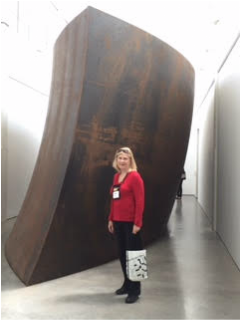 It was easier for me to understand the huge Richard Serra sculpture we encountered in the next room. It took the form of a huge slab called called a Torqued Ellipse. This tall, twisted copper colored monolith reminded me of Stonehenge and made me want to walk around it and explore it. It was powerful and stunning. The Pergamon Exhibition at the Met in New York City took my breath away this past June! The statuary was spectacular. Heroes, soldiers, generals, hermaphrodites...In these statues, every muscle, torso, arm and leg was carved so perfectly I thought these figures might come to life as I walked past them. Who knew the Hellenistic world achieved such realistic beauty? Earlier Greek statuary is stiff and formal. These statues, created after the death of Alexander the Great, are created in a much more dynamic, realistic style.
Of course most of this statuary was copied by Roman sculptors. The original statues and busts were the work of amazingly talented court artists who lived much earlier--in the few hundred years between the death of Alexander the Great (323 BC) and 146 BCE when Rome conquered the Greek mainland. That was the heyday of Hellenistic Greece when the great centers of culture were concentrated in Alexandria and Antioch, Pergamon (now in Turkey), and other cities--not so much in the former city states of Greece. You still have a few days to see this exhibition if you are in New York City, since this blockbuster exhibition continues through July 17.
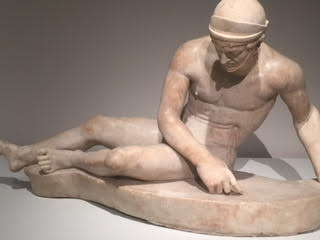 When in New York City in mid-June, I made a beeline for the Pergamon Exhibition of Hellenistic art at the Metropolitan Museum of Art. It was a once in a lifetime opportunity to see the great works of art of this period, after the death of Alexander the Great—statuary, finery—gems, glass, gold—and parts of the famous Great Altar of Pergamon (originally located in what is now Turkey) on loan from Berlin. One of my main goals was to see the statue of the “Dying Gaul”— one of the most famous statues in history. Well, there it was—a marble copy of the famous Hellenistic Greek statue. But…this copy was smaller than life size. And it wasn’t the copy I had hoped to see (which is in Rome, not Naples, where this one came from)…My favorite has a torque around his neck. Nevertheless, this timeless statue emanated all the pathos of the original--and clear respect for the fallen warrior. |
"Art washes away
|
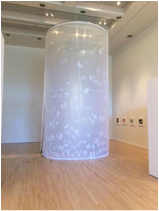
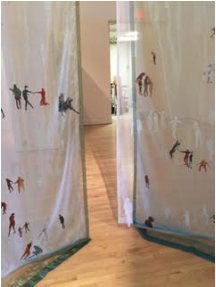
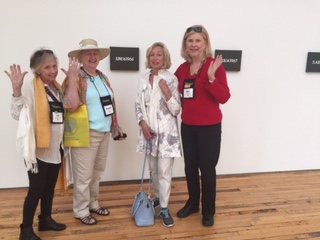
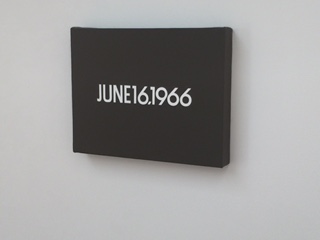
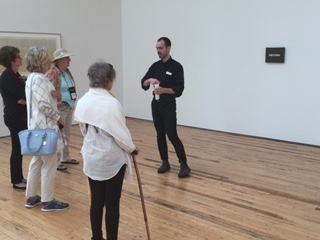
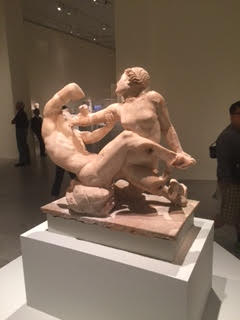
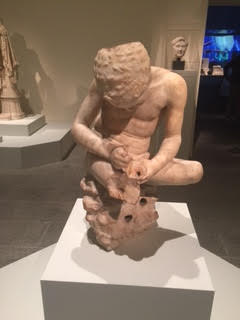
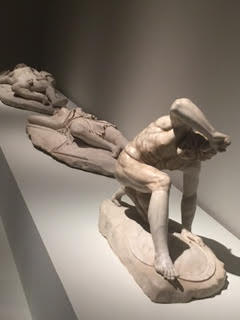
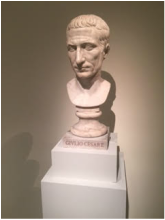

 RSS Feed
RSS Feed